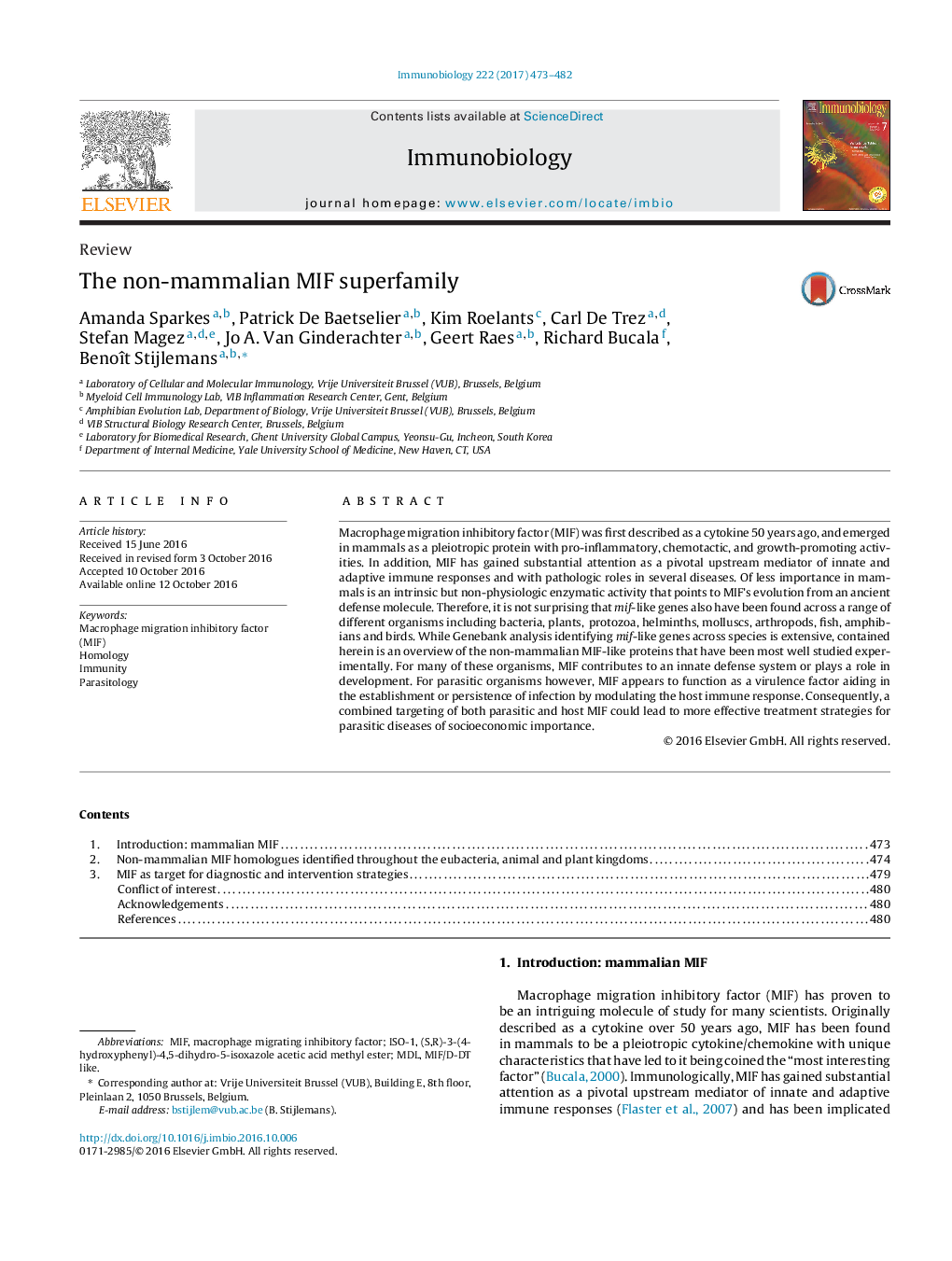| Article ID | Journal | Published Year | Pages | File Type |
|---|---|---|---|---|
| 5533196 | Immunobiology | 2017 | 10 Pages |
Macrophage migration inhibitory factor (MIF) was first described as a cytokine 50 years ago, and emerged in mammals as a pleiotropic protein with pro-inflammatory, chemotactic, and growth-promoting activities. In addition, MIF has gained substantial attention as a pivotal upstream mediator of innate and adaptive immune responses and with pathologic roles in several diseases. Of less importance in mammals is an intrinsic but non-physiologic enzymatic activity that points to MIF's evolution from an ancient defense molecule. Therefore, it is not surprising that mif-like genes also have been found across a range of different organisms including bacteria, plants, âprotozoa, helminths, molluscs, arthropods, fish, amphibians and birds. While Genebank analysis identifying mif-like genes across species is extensive, contained herein is an overview of the non-mammalian MIF-like proteins that have been most well studied experimentally. For many of these organisms, MIF contributes to an innate defense system or plays a role in development. For parasitic organisms however, MIF appears to function as a virulence factor aiding in the establishment or persistence of infection by modulating the host immune response. Consequently, a combined targeting of both parasitic and host MIF could lead to more effective treatment strategies for parasitic diseases of socioeconomic importance.
